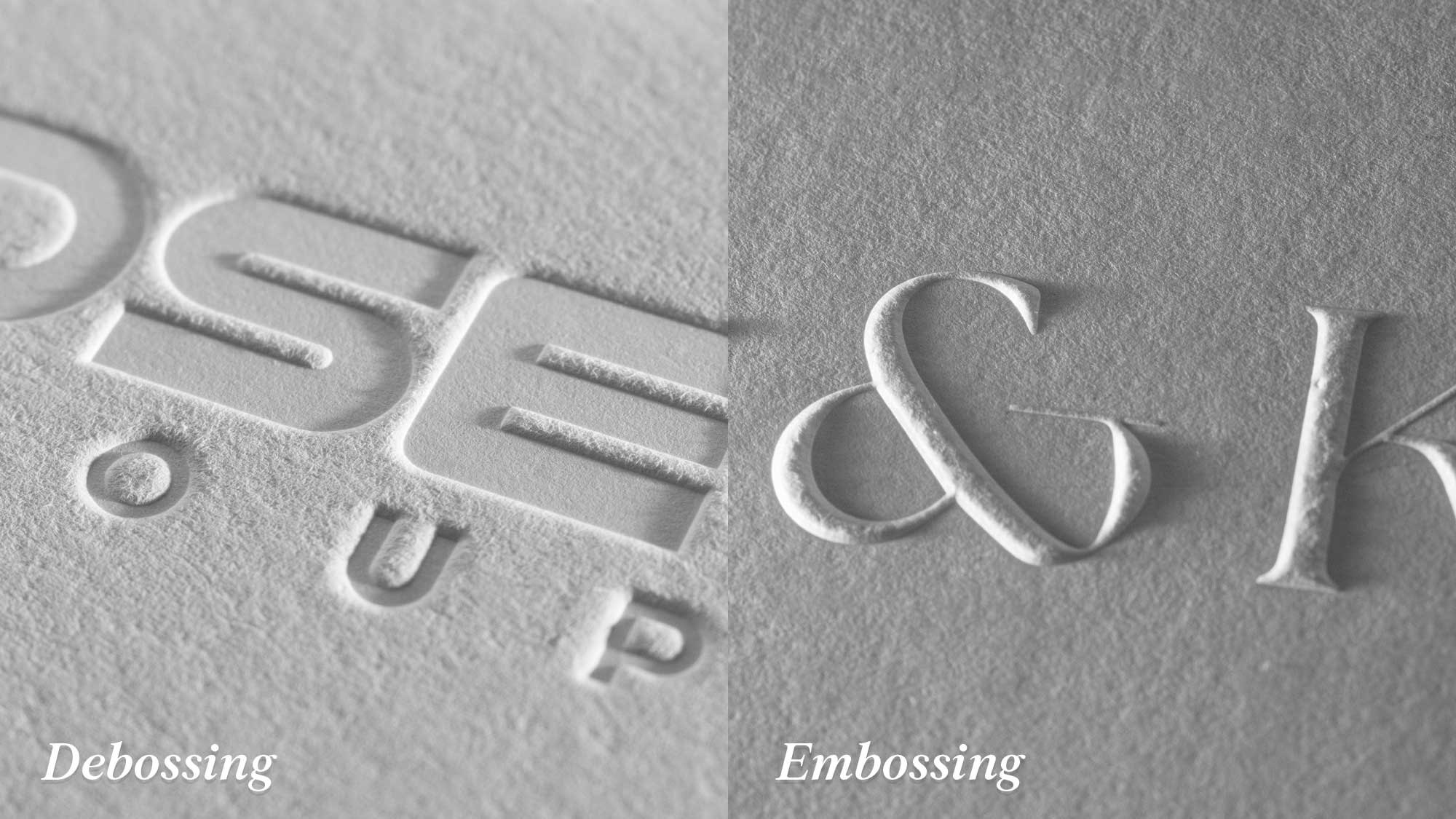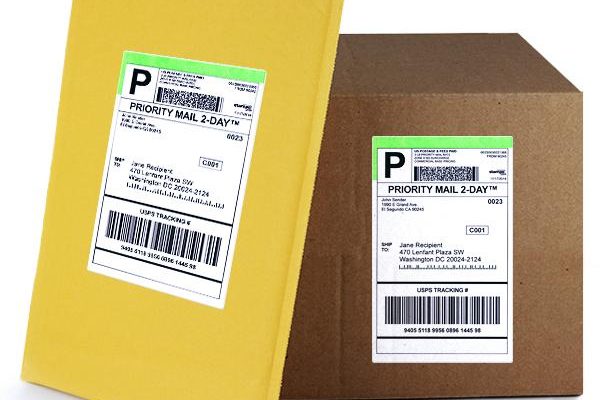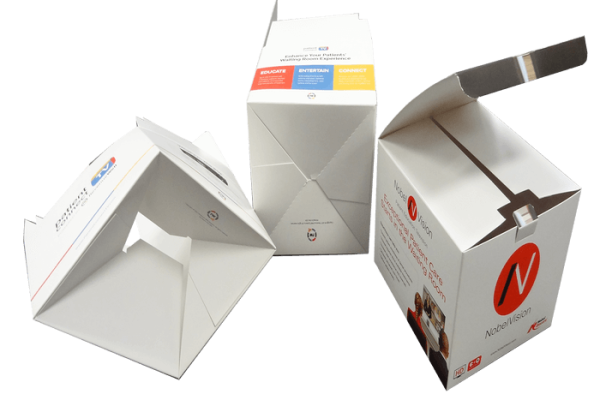Print finishing is more than just ink on paper. It’s about the feel, the visual texture, and the message your brand sends the moment someone touches your packaging. When it comes to adding depth and elegance to your printed materials, the comparison between emboss vs deboss is essential. These two techniques may appear similar at first glance, but their impact on design, branding, and customer experience is entirely unique.
Both embossing and debossing create tactile experiences that turn simple packaging into unforgettable branding tools. While each method raises or presses a design onto paper or cardstock, the results are dramatically different. If you’re exploring ways to elevate your packaging style, learning about emboss vs deboss is the first step in achieving custom print finishing that makes your product stand out.
What is Embossing in Print Finishing?
Embossing is a print technique that raises the surface of your material. It uses a metal die and counter die, which press from opposite sides of the substrate to create a three-dimensional effect. The raised area reflects light and shadows, making the design noticeable both visually and by touch.
This method is widely used in luxury packaging, business cards, greeting cards, wedding invitations, and branded boxes. Embossing is often combined with foil stamping or spot UV for an even more stunning result.
Key Features of Embossing
-
Creates a raised, 3D surface on the material
-
Adds texture and visual interest to packaging
-
Often paired with metallic foil or ink
-
Works best on thicker cardstock or packaging material
Embossing adds class and depth. Whether it’s a logo, a brand name, or a decorative pattern, embossing instantly elevates the tactile and visual appeal of any printed piece.
What is Debossing in Print Finishing?
Debossing is the opposite of embossing. Instead of raising the design, it presses it into the surface of the material. The result is a recessed area that adds texture and a subtle effect, giving the printed piece a professional and refined finish.
Debossing works well for minimalist packaging and can be more understated compared to embossing. It is also versatile and can be used with or without ink or foil stamping.
Key Features of Debossing
-
Indents the design into the surface
-
Subtle and elegant finish
-
Works well with leather, paper, and cardstock
-
Ideal for logos, text, and fine line details
Debossing gives a smooth, sunken impression that’s sleek, sophisticated, and often used in luxury branding.
Emboss vs Deboss: How They Differ in Design Impact
Both embossing and debossing create physical impressions on your printed surface, but their design effects are noticeably different. Embossing pushes the design up from the background, while debossing pushes it into the surface.
Design Differences to Consider
-
Embossing emphasizes logos, titles, and focal points
-
Debossing works well for background patterns or subtle detailing
-
Embossed elements stand out more visually and texturally
-
Debossed designs are elegant and minimal
The choice between the two depends on your brand identity. If you’re aiming for bold and luxurious, embossing is your go-to. If you’re looking for a soft, refined look, debossing may be the better choice.
Cost Comparison Between Embossing and Debossing
Both embossing and debossing require custom dies and setup, which can make them slightly more expensive than standard printing methods. However, the final result often justifies the cost.
Cost Factors to Consider
-
Type of material being used
-
Number of items printed
-
Size and complexity of the design
-
Whether ink or foil is added to the process
Embossing typically uses more pressure and alignment tools, which can sometimes result in slightly higher costs. Still, both techniques fall within the premium print finishing category.
When to Use Embossing for Branding
Embossing is best used when you want the design to pop. It creates an immediate visual and tactile connection with the user. You may choose embossing in the following situations:
-
Luxury product packaging
-
Certificates and official documents
-
Premium invitations or stationery
-
Custom retail boxes for cosmetics or jewelry
Embossing demands attention and adds weight to your message. It makes logos, names, or messages feel more official and exclusive.
When to Use Debossing for Branding
Debossing is ideal for modern, understated brands that value simplicity and elegance. It’s great for branding strategies focused on subtlety and tactile interaction.
Use debossing when:
-
Designing sleek business cards
-
Printing hardcover book covers
-
Branding leather packaging or tags
-
Crafting minimalist cosmetic packaging
Debossing gives your packaging a unique depth without overshadowing the design. It’s especially favored in clean, minimalist aesthetics. see more
Advantages of Embossing in Packaging Design
Embossing stands out in many print projects for a reason. Here are the top benefits:
-
Adds a tactile and visual dimension to designs
-
Creates a premium and luxurious perception
-
Can highlight key elements like logos or titles
-
Enhances brand recall through texture
-
Offers versatility when combined with foil or UV
It’s a strategic way to make printed designs more memorable and high-end.
Advantages of Debossing in Packaging Design
Debossing is equally impactful, especially when subtlety is desired. Its benefits include:
-
Offers a clean and modern look
-
Works well on soft or pliable materials
-
Adds texture without overwhelming visuals
-
Delivers elegance with minimal design elements
-
Blends well with inkless design concepts
Debossing appeals to brands that lean into timeless and classy presentation.
Emboss vs Deboss in Product Packaging
Many industries use embossing or debossing to strengthen their brand image. From cosmetics to electronics, luxury goods to handmade crafts these techniques can shape how consumers perceive your product’s quality.
Bullet Points: Applications of Embossing and Debossing
-
Perfume and cosmetic boxes
-
High-end food packaging (chocolate, tea, wine)
-
Jewelry and watch boxes
-
Personalized gift boxes
-
Premium paper bags
-
Leather-bound notebooks
-
Business and invitation cards
Packaging that uses embossing or debossing instantly feels more refined, valuable, and professional.
What Materials Work Best with Embossing and Debossing
To get the best results, the material you choose matters. Some materials handle pressure better than others.
Ideal Materials for Embossing
-
Thick paperboard
-
Cotton paper
-
Kraft and recycled cardboard
-
Premium cardstock
Ideal Materials for Debossing
-
Leather or faux leather
-
Heavy-duty paper
-
Soft-touch laminated boards
-
Book covers
The goal is to select a surface that can take an impression cleanly without cracking or tearing.
Emboss vs Deboss in Logo Design
Logo placement is critical in branding, and print finishing techniques like embossing and debossing make it more impactful. Embossed logos grab attention; debossed logos invite people to touch and feel.
Choose embossing when:
-
You want to spotlight your logo
-
Your design includes thick or bold elements
Choose debossing when:
-
You want a subtle but elegant effect
-
Your logo features fine lines or small text
Both methods strengthen logo recognition and can be integrated into various marketing materials.
Combining Embossing and Debossing for Stunning Effects
Some designers use both techniques on the same project to create a layered, tactile contrast. For example, a raised emblem (emboss) and a pressed text label (deboss) can make packaging stand out even more.
This technique is known as combination embossing and works well in:
-
Book covers
-
Premium invitations
-
High-end product boxes
-
Limited edition packaging
When used thoughtfully, Your Box Packaging combining these finishes creates packaging that customers will remember.
Mistakes to Avoid with Embossing and Debossing
Although they’re impactful, these techniques must be used wisely. Here are common mistakes to avoid:
-
Using thin materials that tear under pressure
-
Adding too many embossed or debossed areas on one piece
-
Ignoring alignment between die and printed design
-
Using intricate designs that lose clarity in the process
-
Overlapping emboss with text that’s too small
Always work with experienced packaging professionals to ensure quality results.
Final Thoughts on Emboss vs Deboss
Both embossing and debossing offer unique ways to bring design elements to life. The choice between them depends on your brand’s tone, product type, and budget. One delivers bold sophistication; the other, subtle elegance. No matter which method you choose, your packaging gains an unmistakable layer of professionalism and class.








